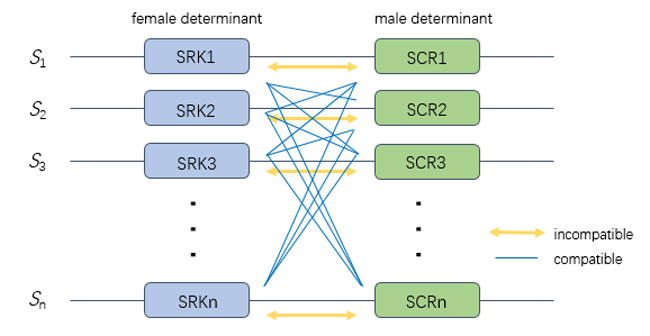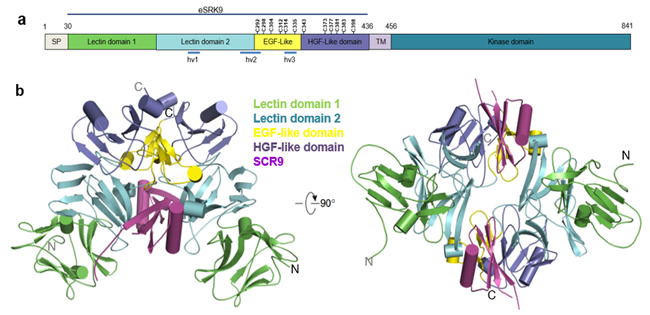Jijie Chai research group published an original article to elucidate structural mechanism of self-incompatibility response in Brassica
On November 8th, 2016, Jijie Chai research group from Tsinghua University published an original acritical entitled “Structural basis for specific self-incompatibility response in Brassica” to elucidate the molecular mechanism of self-incompatibility response in Brassica in Cell research.
In order to encourage outcrossing, many flowering plants have evolved a variety of genetic systems called self-incompatibility (SI) to prevent selfing. Charles Darwin thoroughly described the plant SI phenomenon in his work "The Effects of Cross & Self-Fertilization in the Vegetable Kingdom" in 1876. In many SI plants, SI response in controlled by a single polymorphic locus, designated S Locus. Molecular studies have proved that S locus could encode the female and male S determinants which are tightly linked to form a genetic unit called S haplotypes.
In Brassica, the female and male S determinants of SI response are the stigmatic expressed S-locus receptor kinase (SRK) and pollen expressed S-locus cysteine-rich protein (SCR) respectively. It has been estimated that, in Brassica rapa, the number of S-haplotypes is more than 100. Because an SCR protein will only bind and activate the SRK variant encoded in the same S-locus haplotype, the SRK and SCR proteins must co-evolve to maintain their interaction (figure 1). While the molecular mechanism under this specific recognition remains elusive.
Jijie Chai research group reported the crystal structure of the extracellular domain of SRK9 (eSRK9) in complex with SCR9 from Brassica rapa. SCR9 binding induces eSRK9 homodimerization, forming a 2:2 eSRK:SCR heterotetramer (figure 2). By biochemical and bioinformatics methods, they further revealed the molecular mechanisms under specific recognition between different SRK and SCR pairs. This study may serve as a structural template to take advantage of hybrid vigor in crop production.

Figure 1 The SI response in Brassica
The correspondence author and first author of this article is Prof. Jijie Chai and Ph.D. student Rui Ma from school of life sciences. Dr. Zhifu Han, Dr. Zehan Hu, Guangzhong lin, Dr. Heqiao Zhang from school of life sciences, Vice professor Xinqi Gong from Renmin University and professor June B Nasrallah from Connell University also took part in the research. The data collection was finished with the help of Shanghai Synchrotron Radiation Facility (SSRF). The research is supported by National Natural Science Foundation of China and Chinese Ministry of Science and Technology.

Figure 2 Crystal structure of eSRK9-SCR9 complex
Links:http://www.cell-research.com/aoparts.asp?id=562

